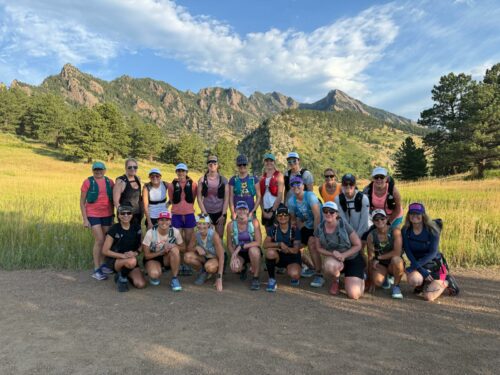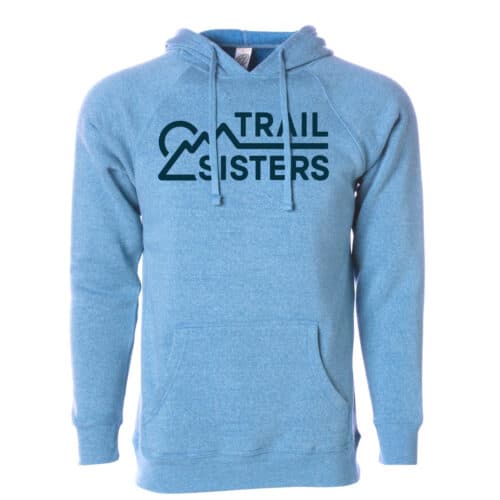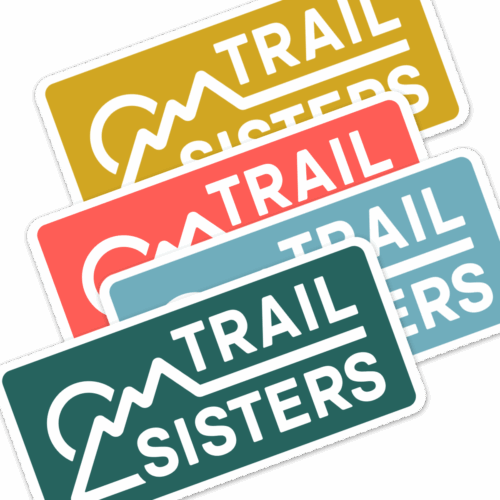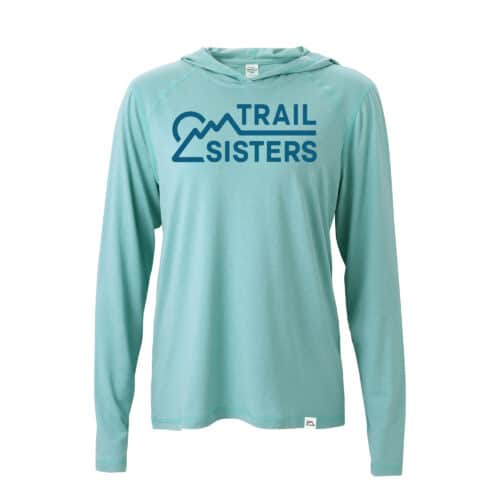In my work as a psychotherapist, I teach my clients how cognitive distortions can get in our way and shape how we perceive ourselves, the world, and the future. We have tens of thousands of thoughts per day that contribute to a hum of background chatter. We weave these thoughts together to narrate the story of our experiences and our lives. Many of our thoughts are accurate appraisals that aren’t worth much attention. When we’re well resourced, most of us can be quite thoughtful, kind, and optimistic. At the very least, we can see things with clarity and make an accurate appraisal about which action we can take next. When we’re stressed, however, one wily thought can create a spiral of negative thinking that can leave us feeling unglued.
We’ve all had the experience of an unanticipated gloomy thought that descends upon us in a way that feels intrusive and out of our control; “What if I can’t do this?” or “Am I about to humiliate myself?” Cognitive behavioral therapists call these “automatic negative thoughts” (ANTs), since they show up unexpectedly like ants at a picnic. We can’t stop these thoughts from happening, not entirely. If we could, we would have done it by now. What’s in our control, then?

We can get better at catching the thought and slowing it down to examine it before it yanks us into the deep. It takes some training to catch the first thought rather than the third or the tenth thought. By that point we’re likely frustrated and anxious. Our negative thoughts tend to fall into 10 categories called cognitive distortions. Below, I use a few real-world examples of thoughts that have threatened to drag me (or someone I know) out of the moment and into a tumultuous storm of negativity during a run or a hike. You can likely see how the initial thought can spiral until we’ve touched on each of the 10 distortions.
- All or nothing thinking (sometimes called black-or-white, polarized or dichotomous thinking): Seeing things in ‘black-or-white’ categories. If something isn’t perfect, we see ourselves as a failure or as not good enough. This is the root of perfectionism. “I need to drastically improve my fitness before I can say yes to a hiking trip”. “My pace was garbage in the first two miles; I should just take the DNF (did-not-finish)”. “I can’t sign up for a race like that; that’s for ‘real’ runners”.
- Overgeneralization: Seeing a single negative experience as something chronic, or something that will never be different for us. Using words such as “always” or “never” are clues that we’re overgeneralizing. “I always go out too hard, then bonk three quarters into the run”. “I’m never going to be a fast runner; I’m not going to waste my time with speedwork”. “I can’t join a running community; I’ll just slow everyone down”. Hint: the “always” or “never” can be implied.
- Mental filter: We focus on one (or several) perceived negative details of an experience and we’re not able to see anything positive about it anymore. “You want my race report? I arrived late, I wore the wrong shoes, I spilled coffee on my shirt, I missed a critical turn…” (and on and on). “The only thing I can remember about the backpacking trip was how much it rained on the third morning”. “I had a running coach once but he rescheduled two video chats in a row so it was a waste”.
- Discounting the positive: Ignoring positive factors because they don’t seem to “count”. If we do well, we tell ourselves that anyone could have done it, or it wasn’t good enough. “I placed second in my age group, but it was a smaller race so it isn’t the same.” “Yes I run ultras, but I’m a back-of-the-pack runner; I’m not fast”. “I set a PR today, but then I looked at Strava and realized everyone I know is still faster than me”.
- Jumping to conclusions: Thinking we know how things are, or that we can predict how things will turn out even when we don’t have all the facts or evidence. We can do this in two ways:
- Fortune telling (sometimes called catastrophizing): We think we know with certainty that things will turn out badly, or we question and doubt ourselves. “I’m already planning where I’ll put that plaque they give to the person who finishes dead last”. “I’ve already visualized the whole thing in my mind; it’s going to be a disaster”. “What if I roll my ankle? What if I have GI issues? What if my headlamp dies? What if I can’t sleep at all the night before the run?” (and on and on).
- Mind reading: Imagining that someone (or everyone) is thinking something negative about us. This is the root of social anxiety. “The day I joined my first group run, everyone was probably wondering ‘why is she even here?’”. “I’m not going to fit in with a bunch of trail runners; my body is too [insert body-shaming comment here]”. “My co-workers are probably laughing at me in the group chat, betting on when I’ll give up the idea that I can run a 50K”.
- Magnification: Overestimating the importance of a small detail or the impact of what isn’t working. When we magnify a single issue or problem, we’re not able to see what is working. “My running form is too awkward; I’m just going to run solo so I don’t embarrass myself”. “My meticulous plan for [pacing/nutrition/bathroom breaks] went out the window during my run so I just gave up and hiked back to my car”. “The trail is a lot muddier than expected and I didn’t train for this, so I’m not even going to try”.
- Emotional reasoning: We create a version of reality based on how we’re feeling in the moment. “I’ve been feeling irritable all morning; maybe this is a sign that group runs aren’t my thing”. “I’m still coming back from an injury, but I felt so good on my run this morning that I immediately signed up for a 100K”. “If I were truly ready for this [race/hike/challenge], I wouldn’t be so nervous”.
- “Should” statements: This one is based on our expectations, and how we wish, hope, or imagine things should be. We can hold ourselves up to an ideal, which churns up shame and guilt. We can also have unrealistic expectations of those around us, which is a sure-fire way to build resentment. “I shouldn’t be so fatigued at this point in my run”. “The race director shouldn’t have put a giant hill at the end of a race”. “I should be more [insert unrealistic expectation here] and less [insert self-deprecating comment here]”.
- Labeling: This is similar to black-or-white thinking, but we use language directed at ourselves or someone else. We can label ourselves when we feel like a failure, when we feel like we aren’t living up to some ideal, or when our inner critic steps in. “I would lead the group run tomorrow if I wasn’t such an awkward loser”. “I’m not a real ‘runner’, I just go for runs sometimes with my friends”. “I have too much of an ADHD-brain to hold an intelligent conversation and hike at the same time”.
- Personalization and blame: This one can take two forms, and they’re both focused on how much responsibility we’re taking. When we personalize, we take on too much responsibility for things that are outside of our control. When we blame, we’re heaping the majority of responsibility on to someone (or something) else. “Nobody is being very talkative on this run, they’re probably mad at me”. “My PT doesn’t know what she’s doing, this injury should have healed by now”. “I shouldn’t have planned such a difficult route for a Sunday morning; I just ruined everyone’s week”.
So we catch the negative thought, slow ourselves down, and examine it… now what?

If we’re able to accomplish this much, we’re already way ahead of the game. This is the bread and butter of mindfulness and of cognitive behavioral therapy. What tends to be more challenging in the moment is to convince ourselves that this is just a thought. The thought itself can’t hurt us, and it’s not necessarily a belief shared by anyone else. We don’t need to know the difference at that moment. Try identifying the cognitive distortion first: “That was black-or-white thinking”. Then get curious about it. My favorite questions are “Is this thought helpful right now?” and “What is the story I’m telling myself right now?”. This will help you decide whether to reframe the thought, redirect your attention, or take action.
A few pointers:
- Just because the thought sounds negative at first glance, it doesn’t mean you’re doing anything wrong or that you need to change anything. The thought “I don’t feel good about that run” can be accurate and helpful, even. You might just need to sit with the negative emotions, or take action that aligns with your values.
- “Reframing” the negative thought does not mean simply flipping it into a positive one. That’s not always helpful. Instead, try to think of another way you can interpret the situation or the story you’re telling yourself. The thought “I set a PR today but then I looked at Strava and realized everyone I know is still faster than me” can be reframed to “I might need to look at my relationship with Strava and be honest about how comparison is impacting my running”.
- At times, redirecting your attention to something else might be the best method. You don’t want to engage in an argument with yourself, and you can always come back to the thought later if it’s that important. Try asking yourself a different question; “What are three things that went well on today’s run?” You can redirect your attention to your body; “I’m going to take a few deep breaths and see if I can slow my heart rate down”. If all else fails, redirect your attention to the environment around you; “Maybe I’ll strike up a conversation with one of the newer runners in the group”.
Here are a few more strategies from Cognitive Behavioral Therapy, to help you shake a negative thought:
Experiment: When stuck in a spiral of negative predictions, come up with an actionable step you can try that feels a little safer and see if the negative thought or prediction holds true. To counter the thought “I’m not going to fit in with a bunch of trail runners”, try “I’ll reach out to the group leader and ask a few questions about the community”. Make it small so you can lower the stakes.
Re-attribution: To ground yourself, identify what’s in your control at that moment. Everything else is likely outside of your control. We deplete our resources when we dwell on things that aren’t in our control anyway. To counter the thought “If I were truly ready for this [race/hike/challenge], I wouldn’t be so nervous”, try “I know I’m going to be battling my fears; how can I shift my attention so I can have positive interactions with the aid station volunteers and other runners?”
Be specific: Try listing out the facts to avoid judgments, assumptions, and mind reading. To counter the thought “The day I joined my first group run, everyone was probably wondering ‘why is she even here?’”, try “A few of the runners asked interesting questions to get to know me, and one said she was also nervous about whether she belonged on her first group run.”
Check the facts: Check for evidence both for and against the negative thought. To counter the thought “This trail is a lot muddier than expected so I’m not even going to try”, identify evidence for giving up: “I’m not experienced with muddy trails, especially at dusk so I should just drive home”. Don’t forget to also identify evidence to the contrary: “Someone lent me a headlamp, and it would be smarter to try out new conditions with a no-drop running group than on my own.”
Double standard: This helps to get some distance from the negative thought. Ask yourself if you would tell a good friend “You should feel strong during every one of your training runs and if you’re doubting yourself, you’re a terrible failure”. In most cases, we are more critical of ourselves than we would be with someone else. To take it a step further, ask yourself “what would I actually say to a friend who was in this situation?”
Survey: Sometimes we just need to get out of our own head. Ask a few people you trust if they think the negative thought holds true, or if they can relate. Try “I’m telling myself that I’m going to finish this race dead last. Does that ever happen for you?”
Acceptance: Instead of fighting against your own thoughts and self-judgments, try radical acceptance. To counter the thought “Nobody is being very talkative on this run – they’re probably mad at me”, try to find some truth in the thought and practice acceptance. “I tend to monitor the experience of others when I’m nervous, but I’ll get over it after the first few miles.”
Cost and benefit analysis: This one takes some time, and possibly some journaling. List all the benefits and all the costs of allowing yourself to believe the negative thought, and see if it’s worth it. This would be a good strategy for the thought “I can’t sign up for a race like that; that’s for ‘real’ runners”. Once you decide whether to believe the thought or let it go, stick with it.

Define the terms: This works best for Labeling. Get curious and ask yourself questions. “When I call myself a ‘failure’, what does that mean? Where did I first hear that term? Is there any baggage I’m carrying from previous experiences or from cultural norms about the concepts of success and failure?” The goal is to disempower any self-limiting beliefs embedded in the language you’re using.
Shades of gray: To counter black-or-white thinking, try to find a more realistic thought that’s in the gray area. To counter the thought “I can’t run more than a 5K at this point in my training, so I’m not going to any group runs”, try asking yourself “How strong am I feeling on a scale from 0-10? Can I create an out-and-back version of the group run that’s closer to a 5K? Can I form a sub-group for runners coming back from an injury or tapering for a race that can join me for a shorter version of the group run?”
Check your values: Our thoughts tend to be driven by our values and our core beliefs about ourselves, the world, and the future. If you’re ready to dig deeper and examine the roots of your negative patterns of thinking, you’ll need even more curiosity. Ask yourself “If this thought were true, what would that mean to me? Why would it matter so much?” This could work well for a thought such as “My PT doesn’t know what she’s doing, this injury should have healed by now”. You might ask yourself “If I’m putting my trust in someone I don’t find trustworthy, what does that say about my relationship with trust? What would it mean, and why would it matter if it’s true that I’m unable to distinguish between someone trustworthy and someone who might cause more harm?”
You can try each of these strategies on your own. You’ll likely find patterns, and that certain strategies fit better for you than others. To dig deeper and to map out a plan to move past these self-limiting thoughts and beliefs, you may want to work with a psychotherapist or a coach. Keep in mind that it takes a lot of repetition, but you can absolutely shift these and other patterns of distorted thinking.















